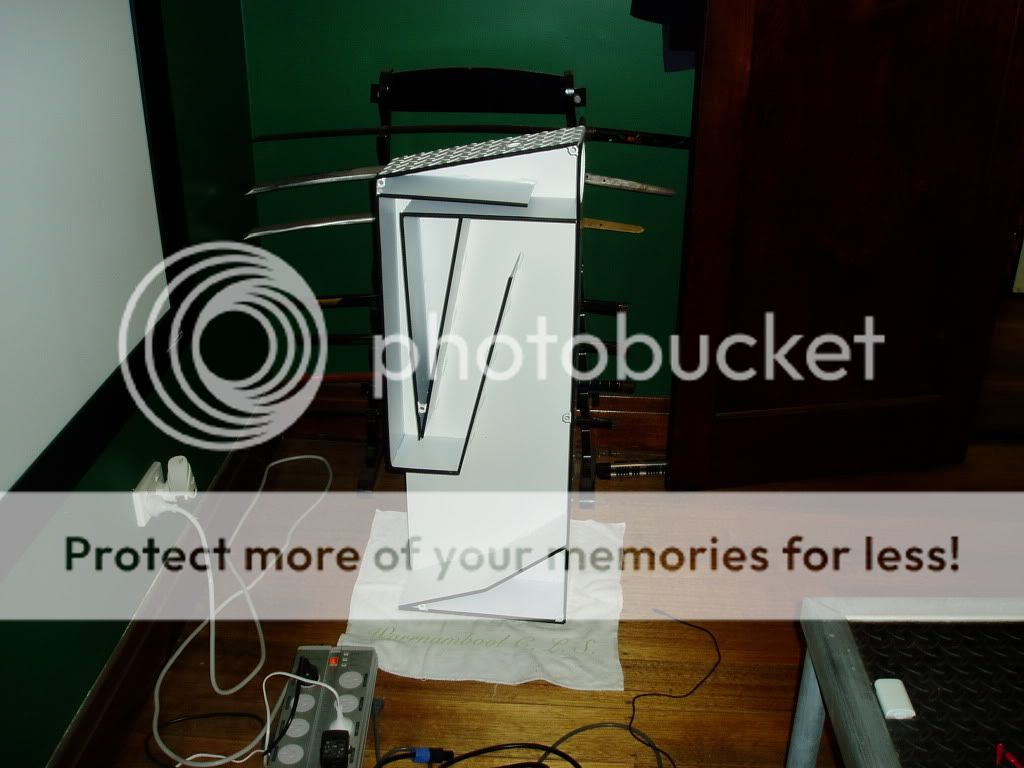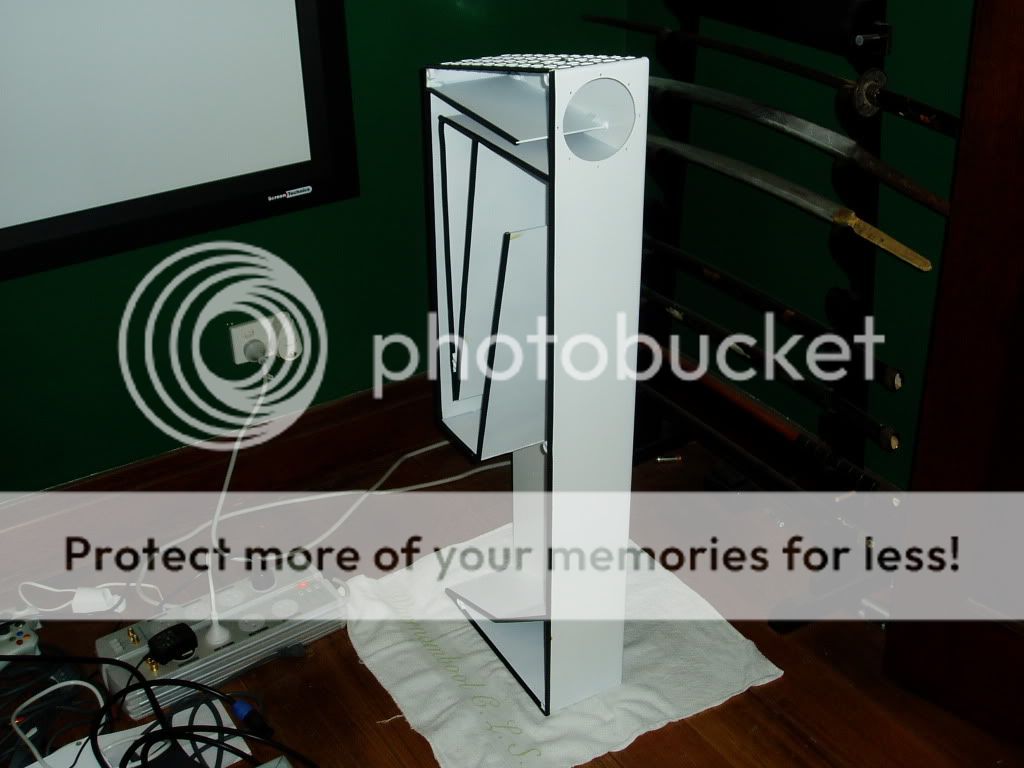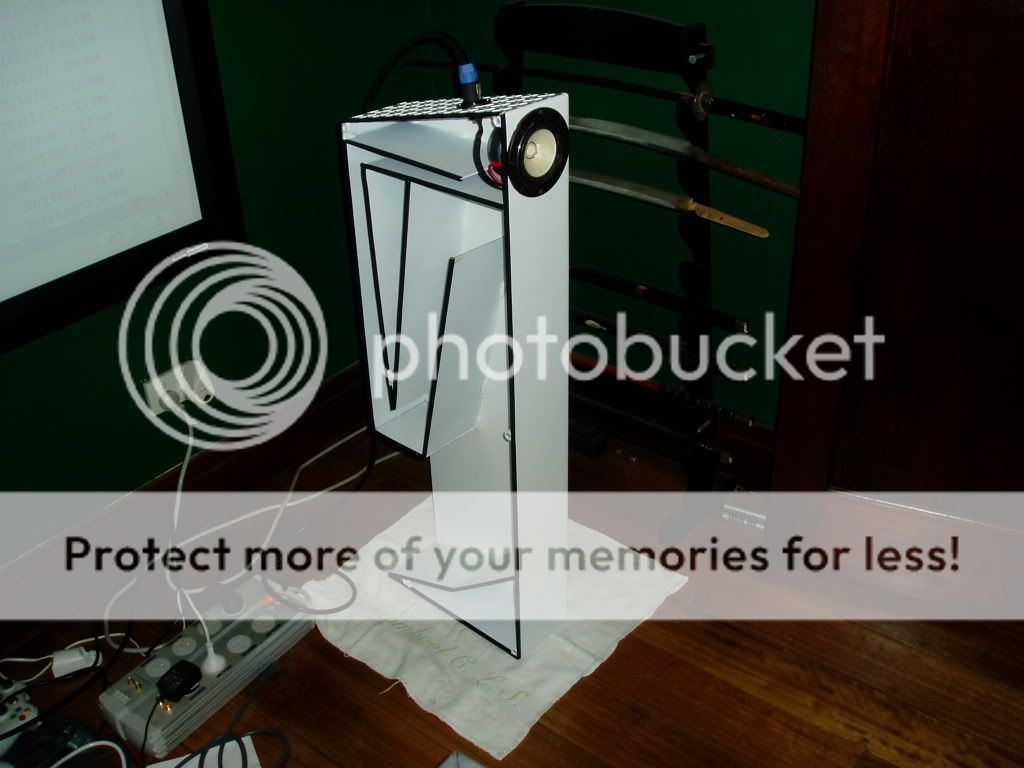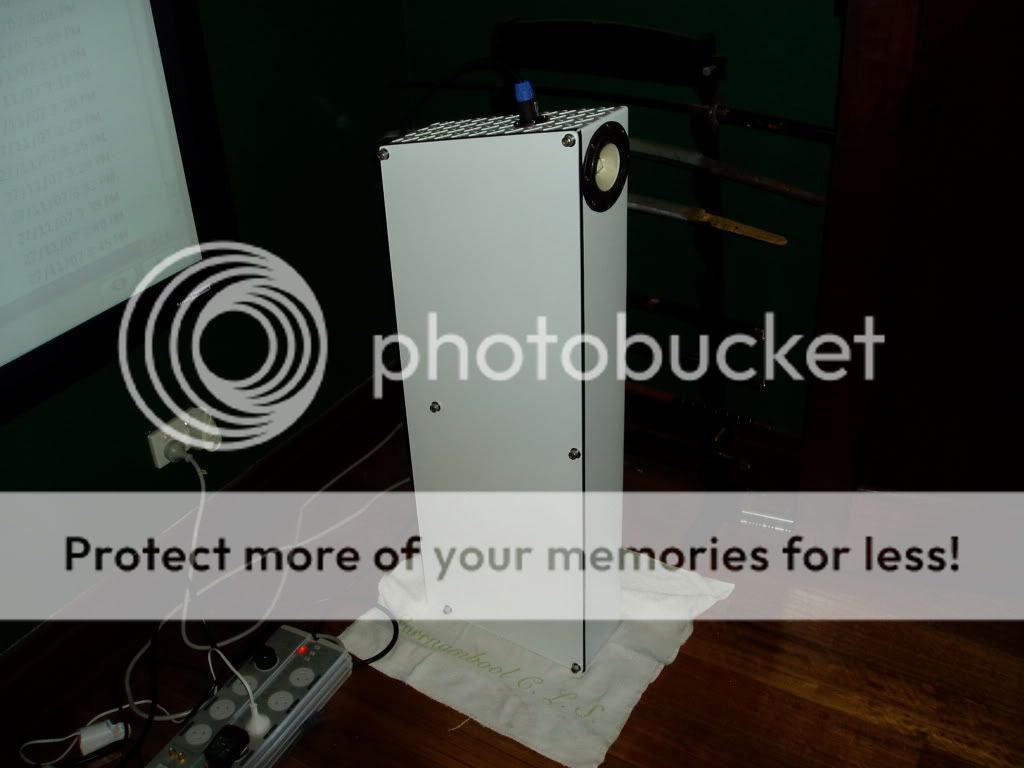If we are considering other metals copper and brass is also available in sheets, COnsiderably more expensive but also considerably more beautiful.
Aluminium (as spelt in all but the home of Microsoft) is in some ways easier to work. I prefer 3mm aluminium to 1.6mm or 1.8mm steel.
Aluminium (as spelt in all but the home of Microsoft) is in some ways easier to work. I prefer 3mm aluminium to 1.6mm or 1.8mm steel.
OzMikeH said:If we are considering other metals copper and brass is also available in sheets, COnsiderably more expensive but also considerably more beautiful.
Aluminium (as spelt in all but the home of Microsoft) is in some ways easier to work. I prefer 3mm aluminium to 1.6mm or 1.8mm steel.
Trouble is that Aluminum, steel and most other metals, will offer you approximately the same strenght to weight ratio....meaning that yesterday we spoke of 2.5mm steel, that will then turn into roughly 3 times the thicknes for aluminum...which basicly just gave you a bigger box and not much more.
Magura
Scottmoose said:10ga should do the job.
This would be serious overkill IMO. All mine were 14 ga except for the one huge 12 ga floorstander.
chrisb said:wouldn't any type of magnetic alloy have some undesirable affects on the radiated flux pattern of big-a$$ motored drivers.........
Well, it didn't seem to have any adverse affect on 12 -15" HE prosound mud motor drivers, so I don't see why it would on smaller, less powerful ones. 'Worst' case AFAIK is it would slightly decrease Qes, Qts in a tight space, which would be a plus IMO.
panomaniac said:
Most of us "think" that wood will be easier to work, but it isn't always, is it?
Not really, especially with today's adhesive systems, it just takes a different set of tools.
Aengus said:Is there any advantage that steel has over alumin(i)um here?
Like I said previously
OzMikeH said:If we are considering other metals copper and brass is also available in sheets, COnsiderably more expensive but also considerably more beautiful.
These tend to be too massive, soft, defeating the purpose of using metal, so are best used as veneers IMO, though might work well in under-damped alignments with the right thickness.
Magura said:
This is true if we are talking flat sheets. While it would be considerably more trouble to work, a box constructed of (say)corrugated sheets of 3mm aluminum (we spell it that way in Canada too, pace OzMikeH) would perhaps be stiff enough and lighter than the steel version. I suppose we could in this case look at corrugating lighter steel, so the tradeoff might persist...
Aengus
Trouble is that Aluminum, steel and most other metals, will offer you approximately the same strenght to weight ratio....meaning that yesterday we spoke of 2.5mm steel, that will then turn into roughly 3 times the thicknes for aluminum...which basicly just gave you a bigger box and not much more.
This is true if we are talking flat sheets. While it would be considerably more trouble to work, a box constructed of (say)corrugated sheets of 3mm aluminum (we spell it that way in Canada too, pace OzMikeH) would perhaps be stiff enough and lighter than the steel version. I suppose we could in this case look at corrugating lighter steel, so the tradeoff might persist...
Aengus
GM said:All mine were 14 ga except for the one huge 12 ga floorstander.
Hmmmm.... If that's the case, 14 ga steel weighs about the same as 3/4" MDF, right? (for the same surface area).
Hey!
Now this is interesting !
Never thought of this.
But suppose I'd want to make BiB's (hemp FR8c) out of steel,
wouldn't 14ga be to thin for the 19" sheets ?
eg. wouldn't it ring like 'ell ?
darn, I like the idea of steel columns in my room.
Perhaps I could weld on those old-school rivets

Now this is interesting !
Never thought of this.
But suppose I'd want to make BiB's (hemp FR8c) out of steel,
wouldn't 14ga be to thin for the 19" sheets ?
eg. wouldn't it ring like 'ell ?
darn, I like the idea of steel columns in my room.
Perhaps I could weld on those old-school rivets

GM said:This would be serious overkill IMO. All mine were 14 ga except for the one huge 12 ga floorstander.
I always was a bit conservative in my estimates...
Re the ringing, as GM pointed out earlier that's the er, point. Although it rings like a bell if you excite it, you've pushed the natural resonance frequency of the material way up, above the cabinet's operational passband, so there's very little that's exciting these resonances.
panomaniac said:
Hmmmm.... If that's the case, 14 ga steel weighs about the same as 3/4" MDF, right? (for the same surface area).
Greets!
Dunno, I mean I didn't save the specs/calcs I used decades ago, only the results I previously posted, so unless MDF either got heavier per ft^3 and/or annealed CRS got lighter and/or 14 ga got lighter and/or its sheets thinner, then the 14 ga cab will be ~1.63x heavier. That said, now that I think about it, near the end of my career sheet metal gage size tolerance was increased to allow thinner stock, so maybe the gap isn't as great as it once was, though the extra bracing that may be required would off-set it somewhat. IIRC I calc'd a worst case scenario with metal bracing since I could weld, so some weight could probably be pared by bonding wood, fiberglass, plastic, or...........?
GM
GM said:the 14 ga cab will be ~1.63x heavier.
Hey Greg. I think the steel box might be lighter, here's why:
Density of CRS is generally given as 490 lb. per cubic foot.
I have measured the MDF I use at about 48~49 lb. per cubic foot.
So steel is about 10X more dense than MDF.
14 gauge steel is given in various tables as either 0.08" or 0.075" thick.
So it is 10x thinner than 3/4" MDF. (My MDF is actually 20 mm)
Thus a sheet of 3/4" MDF and a sheet of 14 gauge steel should weigh about the same, as the steel is 10x thinner.
But here's the kicker. Because the steel is so much thinner, the speaker box can be smaller for the same internal volume. Were talking a couple of inches off one dimension on the typical box. That's a lot less steel. So less weight.
And of course that does not include the corner blocks inside the MDF box that you "should" be using for strength. Those add weight, too.
Does that sound right to you, or have I missed something?
Greets!
Like I said, AFAIK I apparently didn't save how I arrived at this differential, but I had actual material weights and sheet metal thicknesses to work with, so confident it was accurate for the times. That said, I dug around a bit in what's left of my reference data and found that typical carbon steel weighs 0.283 lbs/in^3 and the high nickel content CRS I would have used is 0.321 lbs/ft^3 (489.024 lbs/ft^3 Vs 554.688 lbs/ft^3) and a local distributor told me some years ago that MDF's official density was 50 lbs/ft^3 with the caveat that this varied a bit between both different manufacturers and even different plants of a given manufacturer so I assume this is a max density. Note too that back then folks didn't believe MDF needed much in the way of bracing while 14 ga does and since I'm a firm believer in having plenty of rigidity for high mechanical efficiency, for sure I would have included plenty of stiffening weight.
So it appears at a glance that if you use typical carbon steel then they would be of similar finished weight for a given net Vb, bracing scheme depending on the bracing material density used, but there may be some undesirable long term magnetic issues that Chrisb mentioned, so until more hard data on this subject is available, Caveat Emptor seems the 'order of the day'.
GM
Like I said, AFAIK I apparently didn't save how I arrived at this differential, but I had actual material weights and sheet metal thicknesses to work with, so confident it was accurate for the times. That said, I dug around a bit in what's left of my reference data and found that typical carbon steel weighs 0.283 lbs/in^3 and the high nickel content CRS I would have used is 0.321 lbs/ft^3 (489.024 lbs/ft^3 Vs 554.688 lbs/ft^3) and a local distributor told me some years ago that MDF's official density was 50 lbs/ft^3 with the caveat that this varied a bit between both different manufacturers and even different plants of a given manufacturer so I assume this is a max density. Note too that back then folks didn't believe MDF needed much in the way of bracing while 14 ga does and since I'm a firm believer in having plenty of rigidity for high mechanical efficiency, for sure I would have included plenty of stiffening weight.
So it appears at a glance that if you use typical carbon steel then they would be of similar finished weight for a given net Vb, bracing scheme depending on the bracing material density used, but there may be some undesirable long term magnetic issues that Chrisb mentioned, so until more hard data on this subject is available, Caveat Emptor seems the 'order of the day'.
GM
hi guys its been a long time but they are now finished with FE108 es, i have heaps of pictures to upload so stay tuned ,i run these with no stuffing ,they run as you see , i took off the side wall so you could see how i sealed them up inside
An externally hosted image should be here but it was not working when we last tested it.
- Status
- This old topic is closed. If you want to reopen this topic, contact a moderator using the "Report Post" button.
- Home
- Loudspeakers
- Full Range
- steel buschorns




